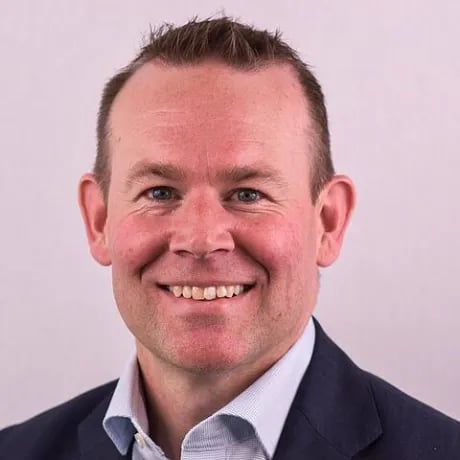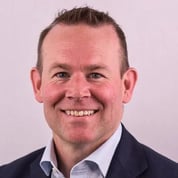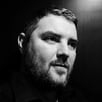Retail Podcast 220: Luke Kingsnorth, CEO Charles Tyrwhitt | Building a global brand

Bob Phibbs interviewed CEO Charles Tyrwhitt on building a family business into a global omnichannel retailer. The British clothing retailer specializes in men’s shirts, shoes, suits, knitwear, and accessories. A student at Cambridge University started the mail order company in 1986.

Tell me something good about retail
Luke Kingsnorth, CEO Charles Tyrwhitt: Building a global brand
Bob: So who are you? And what do you have to do with retail?
Luke: We are a British-based menswear business, specializing in work where formal wear, suits, shirts, ties, and the business casual arena as well.
Bob: Now, you're a multichannel retailer, right? You started in London, but I think you have a few stores here in the states, too, correct?
Luke: Yeah, we're multichannel, mostly national, so we [inaudible 00:00:31]. But we started in London in 1986. And we operate stores in the UK. We have 13 stores in the U.S. We have one store in Paris, in France. But most of our businesses direct through our website.
Bob: Your brand started as a catalog, didn't it, the order, primarily?
Luke: It did, yes. We started before the internet existed. So we started as a catalog business. And then we launched our website in 1998. So we were early into that area. And we had shops from the mid-90s as well.
Bob: What are some of the challenges with being a multichannel retailer?
Luke: We were lucky. We were lucky in the sense that we came from a catalog background. So things like customer databases, and single customer view, and those sorts of things that obviously talks about a lot of these days, came natural to us. We were used to understanding our customers and knowing what they bought, what they liked, and how to talk to them.
Whereas if we come from a traditional bricks-and-mortar background where you weren't used to collecting customer data and you weren't exactly sure who was walking through the door, what they were buying, and when they were buying, it was a little bit more of a challenge.
So I think we were fortunate in the sense that we came from a customer-led area. And that meant that when multichannel became more of a thing, we were better equipped. Data collection in our stores became second nature to us, whereas a lot harder. We had the database system and the CRM systems behind the scenes already setup, because that's what we use as a catalog business.
So I think we were lucky in that sense, and we capitalized on that, and made the most of it. And I think the opportunities that multichannel activity presents are great if you can capitalize on them.
Bob: That's it. And to your point, that single view of a customer, I think, is so crucial, because you may not think too much of a guy who walks in and buys, I don't know, a tie one day, if you realized that, "Oh, my gosh, this guy buys 12 shirts from us every quarter for one of our other locations." You have a different appreciation for that one item he buys, correct?
Luke: Exactly. That might be his first purchase in a retail store, and he's traditionally been an online customer, which then leads into a different way. Whereas if you'd only seen that purchase, it's just a tie patch. It's not quite as significant.
Bob: Now, how did you start out? Were you always in retail, or...
Luke: I wasn't, no. My background was actually commerce. So I started working in the eCommerce arena, actually in financial services back in 1998. And I went through various industries, and really sort of moved with who was investing in this new thing called the internet at the time.
So I went from financial services to recruitment, to broadcasting, to travel, and up until 2007. And 2007 was my first retail experience, and I worked for a company called John Lewis, which is a big UK department store, because I was in the eCommerce team. So we were looking after the website, online marketing, and trying to figure out how many SKU business as the department store is gets all of those online and manages to maintain lots and lots of products online and deliver them to customers in a timely manner.
Bob: I think that's the challenge. Certainly with you, you're more of a boutique, so you have a very curated collection. It's certainly got to be much easier in some ways to know what you're dealing with. But also, you're also dealing with guys.
That didn't come off as well, but we both know what I mean. It's not like we're suddenly going to say, "I'm not going to wear a traditional French, blue business shirt anymore," right? You have a lot of staples that can be updated here and there. But it's a fairly stable fashion business. Is that correct?
Luke: It is. Yeah. And I think it's more stable. But guys are getting increasingly adventurous, and then in turn complex with their buying patterns.
Bob: I think we're hearing that also in simple things, too, how men are now being more open to wearing makeup, that younger guys don't want bar soap, they want shower gels, things that traditionally we might have said, "We know what the male customer is. It's morphing." In a lot of ways, that probably gives you a little bit more freedom to operate.
Luke: It does, yeah. We predominantly look at what men are wearing Monday to Friday in their work environment. And that's gone from a navy blue suit, and white shirt, black shoes, for pretty much every guy out there, to now a much broader range of products. And although formal in its look, it's still usually a pair of pants, shirt, and jacket. The variants of that have become much greater. And that's presents opportunity and challenges.
Bob: Now, do you have any customer stories you can share with us?
Luke: We are in the lucky position that, as you say, we've got lots of men shopping with us, and in quite important times in their life as well. We're selling suits and formal wear, and things like that. We've catered to lots of wedding days and events like that. We had one customer who had ordered a suit, shirt, tie for his wedding.
And then had got to his wedding venue some many miles away from our store and realized that he'd left his shirt at home. So the groom is getting ready for the biggest day of his life at the time with no shirt. So we had a very panicked phone call to our store. And one of our store staff hopped into a taxi and drove the hour or so to the wedding venue. So hands deliver the groom's shirt, which I think we definitely secured a customer for life.
Bob: That's great. And what's nice about that is no one else knew about it. It just is something that only retail would have known that everybody saw the groom went and he got married, and he looked great. That's all that they really wanted to know. Is there a difference between how you manage your employees now, let's say, compared to 10 years ago?
Luke: Yeah. I think on that side, the one obvious change we've noticed is we're 4 or 5 times bigger business than we were 10 years ago. So we've had some pretty rapid expansion over the last 9 to 10 years. And that means that we're a lot bigger. But we went from a small business where everyone knew each other quite well to a business that employs over 1,200 people across the globe.
So I think that was probably the biggest change for us, so the more micro-changes in staff. I think the work environment has changed. As the work uniforms changes, the more relaxed environment. People want to work for businesses with a purpose that they can understand and get behind, and it's not such a transactional relationship, which is great.
We benefit. We have a very visible founder in our business, and that gives a more family atmosphere. And we have a clear purpose that we can unite behind. And so I think that plays in our favor that people do want to come work for us partly because we are a growing business in a difficult industry. But secondly, we do have a clear purpose. And the internal field for business people are very important to us. We consider ourselves as a family business, and we treat people accordingly.
Bob: It's funny, because I always think of your brand as a couple hundred years old. I don't know if it's a British thing with Americans or what, but a Downton Abbey effect. I'm not sure what it is. But I always think of it as, "These guys have been around forever." And it's really isn't that old of a brand. What's been your biggest challenge in the last three years, you think, and how you might have overcome it?
Luke: You mentioned that we are a 33-year-old business. And I think the challenge of that is we were a disruptor in our industry. When we launched, and we took what was an area full of 200-year-old businesses and says, "We think we can do it differently." It's a much more trendy thing to be a disruptor these days.
Back 33 years ago, what was quite a dusty London Street, you hadn't seen any real new entrance into it for a long time. And we came in and looked at things a little bit differently, and wanted to democratize this formal shirt market and give customers a high-quality product at a much more accessible price.
So I think that was how we started. What's been difficult for us in the last three years is we are now 33 years old, and there's a lot more people work here. So keeping that entrepreneurial spirit and verve alive as you grow bigger and bigger is a challenge. And it's really important that we keep that. it's an entrepreneurial business. It was founded by an entrepreneur. And we need to keep that spirit, and managing that and the speed of change that we want to foster in the business is something we're constantly mindful of.
Bob: And I think, also in some ways, you were pretty small. Most retail didn't wake up that many even bought much up until I think easily the last five to seven years. But now, you have all these new players coming in, whether it's suit supply or into chino, or some of these other ones that are all trying to go after this man at a time when a lot of men's office suits and everything have changed as well.
So it's two sides. You got more competition and the customer is issuing the suit and the tie. Is that where we're going? Or do you think that we're going to come back to suits? Or is that more of a younger guy thing now where they're much more trim and fitted, and they wear them in a different way than they're not required, they choose to? What can you tell us about men's fashions in 2019?
Luke: You touched on the point there actually. I think, historically, men were pretty poorly served through choice. And now, there is an abundance of choice. And I think what we've seen with that is that menswear has gone through a cycle, probably in the last 15 years or so, where the first part of that move to be more conscious about what we wear was fit.
So I think if you look back to the mid-2000s, I think it would be unfair to say that men wore some pretty poorly fitting clothes, big suits, and baggy shirts, and things like that. And I think we went through an awakening, if you like, to men, say, "Actually I can buy something that fits me." And that's where we as a business capitalized on that.
And we went from one traditional fit shirt. And today, we have four different fit shares in the traditional fit share that we use as our classic, largest fit. And we have three that are increasingly fitted. So I think men demanded better fitting clothes. And women have always been great about, and men haven't. So we picked up that one. I think we're now in another phase of that, where men now are more experimental, more happy to express some of their personality through what they wear.
And they're not so restricted. So less and less workplaces are prescribing the navy suit, white shirt, black shoes, and a tie uniform and say, "Actually, you choose what you think is appropriate," which is great opportunity for people to express themselves in what they wear. But it also is very daunting and challenging.
When you get the dreaded business casual invite and you don't know whether that means jeans, trainers, and a blazer, or whether that means a pair of smart trousers, shoes. It's a bit of a minefield. So we now see that as our job. Our purpose is to make it easy for men to dress well.
So if we're true to our purpose, we need to help guide people in this new way of dressing. For those that are confident, we've got great quality products for you. For those that need a bit of guidance, we can help guide you in what you should be wearing, and then help you overcome that anxiety, if you like.
Bob: I think that's always a big thing, and whether men or women is, there's a balance between, "This is what I like, and I feel good in," and then also understanding that in most any business situation, you're going to be judged by how you dress. I don't care whether your company requires it, you're judged pretty quickly. We still do that, right?
Luke: We do, yeah. That's exactly true.
Bob: So what do you think the best advice you've ever received, whether that's here as CEO or in some of your past jobs, what would be the best advice you ever received was?
Luke: I think the best advice I've received, and I've always [inaudible 00:15:22], it is true in different industries as well, not just retail, is that clear-eyed focused on who your customer is, understand them, get to know them, spend time with them, hear what they're saying to you. And then use that as the basis for what you deliver through product, through service, through environment, and use that.
But then also use that to say, "I'm going to look a little bit further into the future and hopefully provide something that you don't yet realize you want to get ahead of that." It's a mantra that we have here as a business. And one I constantly [inaudible 00:16:03], and it's, is understand our customer, let's understand who they are, what they need, and what they might need in the future, so that we can adapt our business and product offering to serve them.
Bob: I think that's so important because it's so easy, I think, as retailers to either follow a trend or to say, "We can do anything," and you find out, "Actually, no, our customers don't come to us for that. They come to us for something else. And maybe we missed something, and somebody else is always looking." I think that's the other thing that's certainly has changed in retail is there are so much competition.
And the way forward is murky. Are we all going to be buying everything on a smartphone and having a...you're scanning yourself on a phone, and then buying something? It's not the way I want to buy something. But I know that some people think that's going to be it, or we're just going to go into a store and a magic mirror tells us what it looks like. To me, a sale doesn't happen until somebody tries it on, though. Whether it's in a store or at home, ultimately, that's the litmus test, isn't it?
Luke: The best of your brand and the best testimonial for your brand is the customer wearing the product. And you live and die by that if they enjoy wearing it, and it's high quality, and they're happy with what they've got, then you've won. So, yeah, I completely agree with that.
Bob: One of my clients, she always asks her customers, "How does this make you feel?" And I always think that's just a great way to think about it when you put on a garment, "How does it make you feel?" not, "Does it look good on me?" "How do you feel?" To your point, some people put clothes on, they're supper confident, but there's other people that are more timid, and it could be a little bit more like armor. It's protecting you. It's giving you extra support somehow.
Luke: When you feel comfortable and you look great, the self-confidence shines through, I think. And we see that in the products that customers buy. Comfort and style, go hand in hand, really. You don't want to be looking great but in a completely uncomfortable suit, or pair of shoes, or something. And equally, you don't want to be comfortable but look scruffy or like a slouch.
Bob: No, we've all been there with the shirt that's a little too tight, or the jacket that's just a little bit off, and it's distracting, I think.
Luke: It is.
Bob: I ask all of my podcast guests, you've got a friend of yours, and they take you to lunch, and they say, "Hey, I am thinking about giving up my day job, Luke. And I'm going to open my own retail store. So could you give me any advice?" So what would you tell a friend who is looking to go into a brick-and-mortar store business?
Luke: I would tell them get ready for a roller coaster, I think it would be the best advice. And that is like any roller coaster. There'll be times when it's exhilarating and fun, and there'll times when you're absolutely petrified. But as long as you're the person that's happy to embrace highs and lows, then go for it. It's such a dynamic industry. It's such a constantly evolving, changing products customer, routes to market. It really is an intellectual, emotional, sometimes, physical challenge. But if you're ready for that, then dive in.
Bob: I like that idea of the roller coaster. That's good. When you feel overwhelmed or when you lost your focus temporarily, what do you do to get it back? How do you feel with that?
Luke: I always, again, come back to the customer. If you lose focus, then the thing that grounds you and gets you back, center to what is important is, are we serving the customer as best we can through our product, through our service, through our various channels. That's your North Star that guides you. And then the other thing about it is at the end of the day, life is meant to be fun. It's meant to be interesting. And as long as it's that, then you're in a good spot.
Bob: Nice. So the name of this podcast is "Tell Me Something Good About Retail." What could you tell me? Tell me one thing, what's good about retail?
Luke: The great thing about retail is we, hopefully, make people happy. That's our job. I think in most areas, we are selling things that people need that make their life better in some way or form. And that can be through any real product that you're selling. It's helping people. And there's a great feeling of when you've matched the right product to the customer and everyone walks away happy. And that's a great aim.
Bob: Very true. I like that. Tell me, how can they find out more about Charles Tyrwhitt and your stores?
Luke: So we have our always-on website, ctshirts.com. And we have 13 stores spread across mainly the east of America. So if you're in either New York, Philadelphia, Chicago, Houston, Washington, you'll be near one of our stores. And I would encourage any customers that are in those areas to pop in and get the real Charles Tyrwhitt experience, and meet some of our fantastic team.
Bob: Excellent. That's a great way for us to end. And I appreciate your time today, Luke.
Luke: Great. Thank you very much, Bob.

Find out more about Luke

Take My FREE Retail Assessment Quiz
Use this free Retail Assessment Tool to discover where you truly excel in retail, and uncover areas for improvement.


.webp?width=102&height=111&name=image1%20(1).webp)